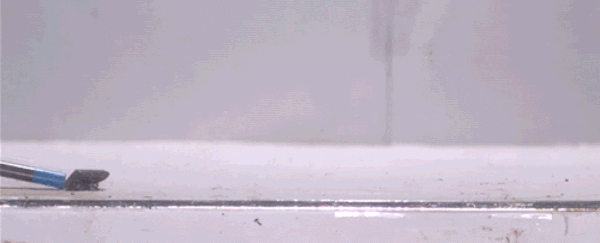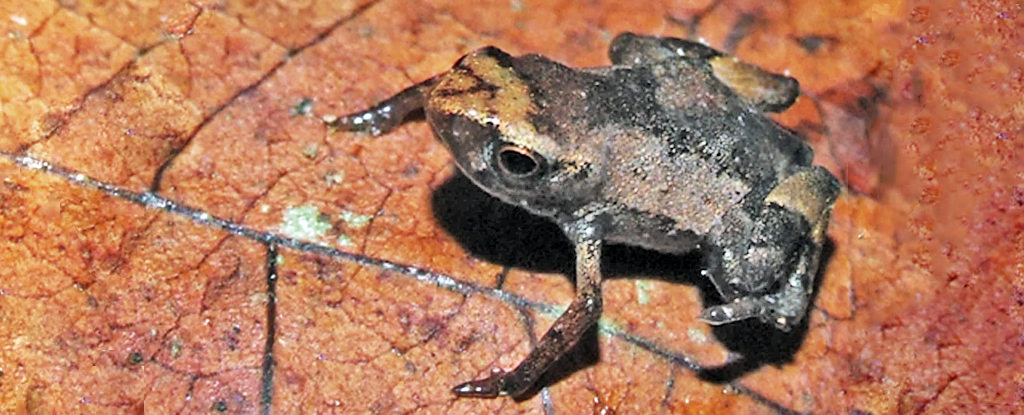Smaller than a pea, flea toads are so teensy they approach the limits of how small a backboned animal can be.
Only entering scientific literature in 2011, initial descriptions of Brachycephalus pulex in Brazil’s Serra Bonita mountain range led to them being referred to as toads. And curiously tiny ones at that.
Researchers have now measured enough of these miniscule leaf-litter-patterned amphibians – which are indeed frogs – to confirm the ridiculously small sizes of the initial specimens were not just a fluke.
“Our data show that the flea toad… can be crowned as the tiniest frog and vertebrate species in the world,” State University of Santa Cruz herpetologist Wendy Bolaños and team write in their paper. “Identifying the smallest frog in the world has been no easy challenge.”
Papua New Guinea’s Paedophryne amauensis previously held this ‘smallest’ record, but at 7.7 millimeters (0.3 inches), the males are over half a millimeter larger than the Brazilian frog, Bolaños and colleagues confirm. They measured 46 male and female flea toads and between 2 to 30 individuals from other species of ‘smallest’ amphibian contenders.
The scientists had to closely examine the frogs’ genitals to ensure the animals they measured were fully developed adults.
They found the adult male flea toads averaged around 7.1 millimeters. Females of all the tiny frog species tend to be slightly larger (with an average of 8.15 millimeters for B. pulex), likely due to the need to fit a bunch of developing eggs inside their bodies.
While being tiny has many advantages, including requiring less food and being harder for predators (and the researchers!) to find, it comes with a price too.
A 2022 study speculated that physical limitations for animals with internal skeletons (vertebrates) hit at around 6 millimeters. Beneath this threshold it becomes challenging to fit enough cell types to create all vital organs, including a large vertebrate brain, or produce enough eggs for a sustainable population.
Such confined body plans can mean losing common frog features, such as the ability to jump or hear their own species’ love songs.

For the flea toad, it seems this downsizing has not left enough room on their limbs for standard amounts of fingers and toes. They are missing their first and forth fingers entirely, leaving only a distinct, long third finger, shorter second finger, and a vestigial fifth finger.
What’s more, the only hard bony bits flea toads have are their spine and skull. Everything else is softer cartilage.
Like related species B. ephippium and B. pitanga, the flea toad’s ears are underdeveloped, so they may not be able to hear either. So far researchers have not observed them making any form of vocalization.
None of this must bother them too much though, as flea toads still stalk tiny prey in the dense leaf litter and epiphytes of their mountainous forest homes.
This research was published in Zoologica Scripta.





